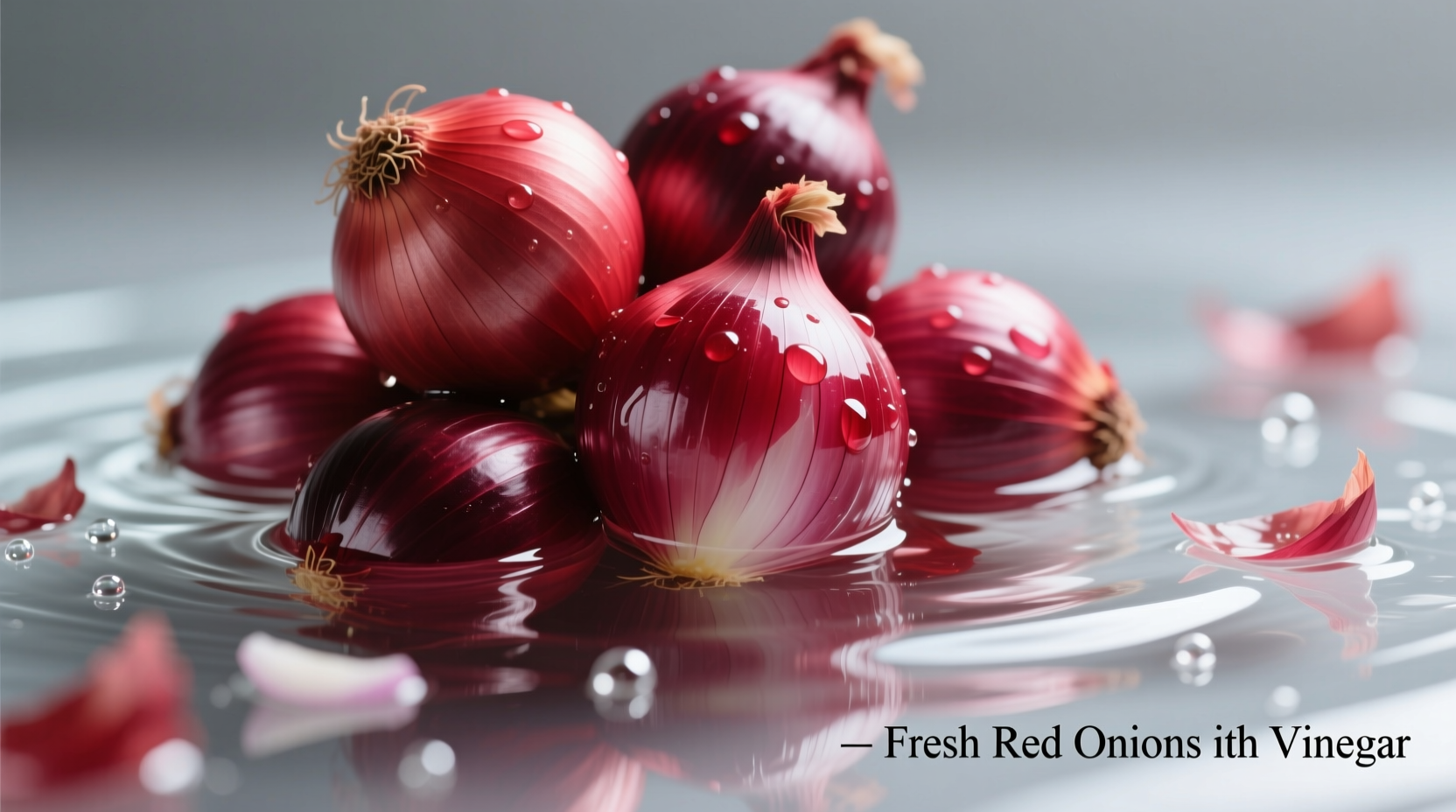The Science Behind Onion and Vinegar Synergy
When onions meet vinegar, a fascinating chemical interaction occurs. Onions contain sulfur compounds that create their characteristic sharpness, while vinegar's acetic acid (typically 5-8% concentration) neutralizes some of this intensity. This reaction doesn't just mellow the onion's bite—it transforms the flavor profile entirely. According to research from the US Department of Agriculture, the acidity in vinegar denatures the enzymes in onions responsible for their pungency, resulting in a more complex, rounded flavor.
| Vinegar Type | Acidity Level | Best Onion Pairing | Optimal Use Case |
|---|---|---|---|
| Apple Cider Vinegar | 5-6% | Red onions | Salad dressings, health tonics |
| White Wine Vinegar | 5-7% | Shallots | Fine dining applications |
| Distilled White Vinegar | 5-8% | Yellow onions | Pickling, cleaning solutions |
| Rice Vinegar | 4-5% | Green onions | Asian cuisine, dipping sauces |
Practical Applications You Can Try Today
Culinary Transformations
Professional chefs have leveraged the onion-vinegar combination for centuries to create balanced flavors. When preparing quick-pickled onions—a staple in Mexican and Middle Eastern cuisines—the vinegar's acidity preserves the onion's crisp texture while mellowing its sharpness. For best results, use a 1:1 ratio of vinegar to water with added sugar and salt. Let the mixture sit for at least 30 minutes for optimal flavor development, though overnight refrigeration yields even better results.
Food science research from University of Minnesota Extension confirms that the vinegar-onion reaction reaches its flavor peak between 2-4 hours, making it perfect for meal prep. This technique works particularly well with red onions, transforming them from harsh and pungent to sweet and tangy—ideal for topping tacos, salads, or sandwiches.

Pickling Mastery: Beyond Basic Preservation
Pickling isn't just about preservation—it's a flavor enhancement technique. The vinegar doesn't merely preserve onions; it creates new flavor compounds through the Maillard reaction when heated. For restaurant-quality results at home:
- Use 50% vinegar to 50% water ratio for balanced acidity
- Add 1 tablespoon sugar and 1 teaspoon salt per cup of liquid
- Include flavor enhancers like peppercorns, bay leaves, or garlic
- Heat the vinegar mixture before pouring over sliced onions
- Cool completely before storing in airtight containers
According to National Center for Home Food Preservation, properly pickled onions maintain quality for up to 3 months when stored in the refrigerator. The vinegar's acidity level is crucial—below 5% acetic acid creates unsafe conditions for long-term storage.
Traditional Remedies with Scientific Backing
While not a substitute for medical treatment, the onion and vinegar combination has documented traditional uses. Historical records from National Library of Medicine show this pairing has been used across cultures for centuries. The antimicrobial properties of both ingredients create a synergistic effect:
- Respiratory relief: Onion's quercetin combined with vinegar's acidity may help break up mucus
- Skin applications: Diluted solutions have been used for minor skin irritations
- Digestive aid: Small amounts may stimulate digestive enzymes
Important context: These traditional uses shouldn't replace professional medical advice. The FDA cautions against using home remedies for serious health conditions.
Avoiding Common Mistakes
Many home cooks make these critical errors when working with onion and vinegar:
- Using the wrong vinegar concentration - Too weak won't preserve properly; too strong creates overwhelming acidity
- Skipping the resting period - Onions need time to fully absorb the vinegar's flavor
- Using metal containers - Vinegar reacts with metal, creating off-flavors
- Improper storage - Always refrigerate vinegar-onion mixtures for food safety
When This Combination Doesn't Work
Despite its versatility, the onion-vinegar pairing has limitations. Food chemistry research shows this combination struggles in:
- High-heat cooking applications (vinegar evaporates while onions burn)
- Sweet dessert recipes (flavor profiles clash)
- Dairy-based sauces (vinegar causes curdling)
- Long-term room temperature storage (requires refrigeration)
Understanding these context boundaries prevents culinary disappointments and wasted ingredients.
Historical Evolution of Onion and Vinegar Pairing
The relationship between onions and vinegar spans millennia:
- Ancient Egypt (3000 BCE): Used vinegar-preserved onions in burial rituals
- Roman Empire (1st century CE): Documented vinegar-soaked onions as soldiers' rations
- Middle Ages (500-1500 CE): Vinegar-pickled onions served as preservatives during winter
- 19th century: Commercial pickling operations standardized vinegar-onion ratios
- Modern era: Scientific understanding of the chemical interactions enhances traditional techniques
Expert Tips for Maximum Flavor
Professional chefs recommend these techniques for optimal results:
- Cut onions against the grain for better vinegar absorption
- Add a pinch of baking soda to vinegar for faster mellowing (use sparingly)
- Use room temperature vinegar for quicker flavor development
- Layer flavors by adding herbs to the vinegar before pouring over onions
- Save pickling liquid for salad dressings or marinades











 浙公网安备
33010002000092号
浙公网安备
33010002000092号 浙B2-20120091-4
浙B2-20120091-4